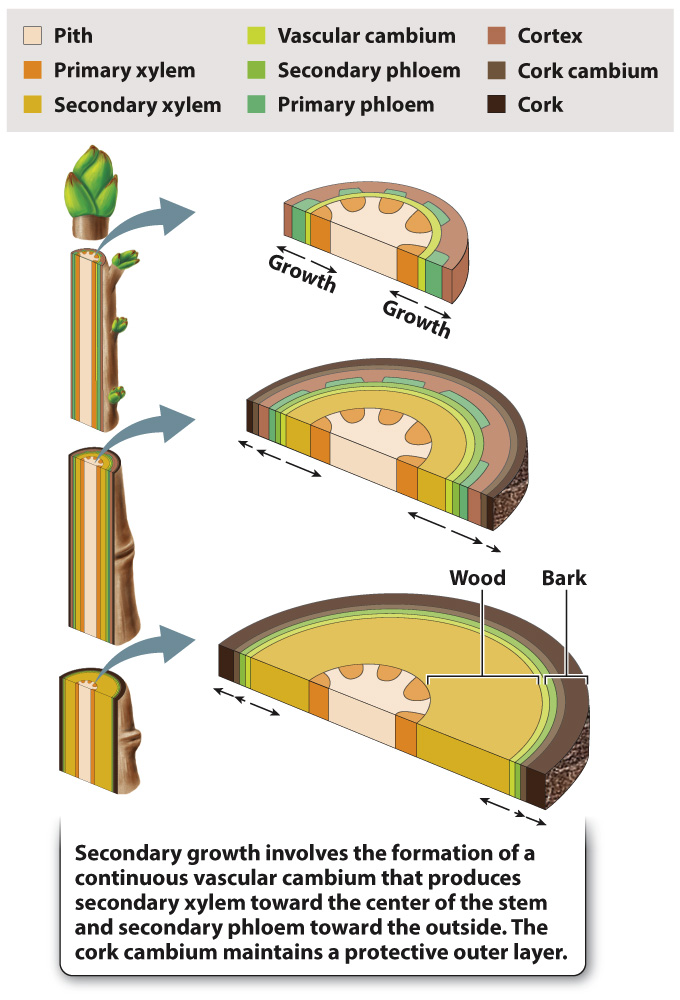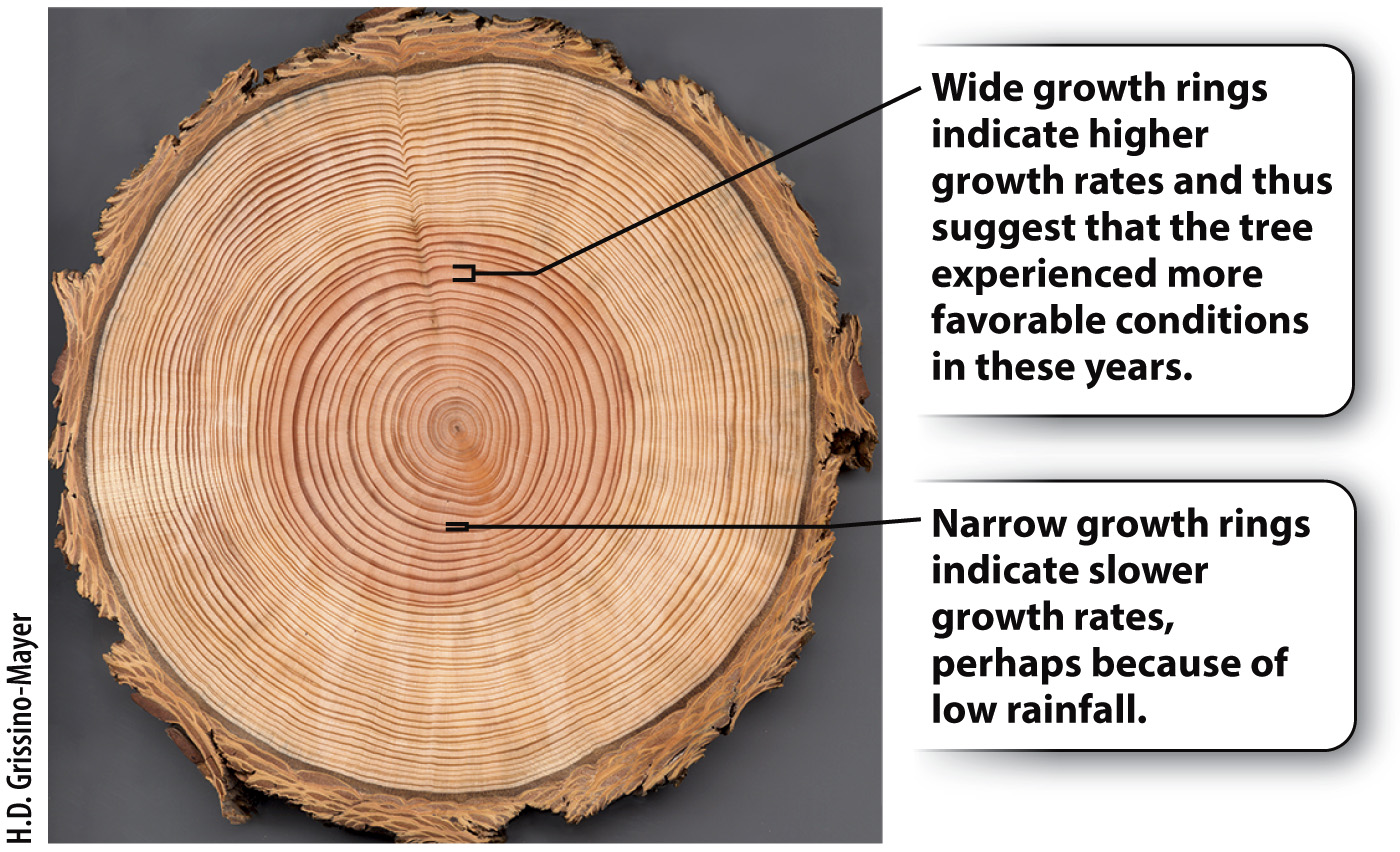The vascular cambium produces secondary xylem and phloem.
The vascular cambium forms at the interface between xylem and phloem. In stems, the vascular cambium derives from procambial cells within each vascular bundle and parenchyma cells in between the bundles. In forming vascular cambium, both types of cell take on a new identity, becoming meristem cells.
The vascular cambium produces new cells that differentiate on both its sides. Those to the inside of the vascular cambium become secondary xylem, and those on the outside become secondary phloem (Fig. 31.11). The vascular cambium forms a continuous layer, one cell thick, which surrounds the xylem and runs nearly the entire length of the plant. When you peel the bark off a stem, it separates from the wood at the vascular cambium. This is because the undifferentiated and actively dividing cells of the vascular cambium are weak and easily pulled apart. All of the material produced to the outside of the vascular cambium, including the secondary phloem, makes up the bark.

Plants must produce more secondary xylem than secondary phloem to replenish the water lost by leaves at high rates during the uptake of CO2 for photosynthesis (Chapter 29). As the vascular cambium forms new secondary xylem cells along its inner face, the newly formed cells push the vascular cambium outward, much the way the elongation of newly formed cells pushes the shoot apical meristem upward. The vascular cambium accommodates this outward movement by adding new cells that increase its circumference. The secondary phloem, however, is unable to produce any additional cells. As the production of secondary xylem pushes the vascular cambium outward, the phloem becomes stretched and, eventually, damaged. Consequently, the vascular cambium must continually produce new secondary phloem.
652
Over time, xylem conduits lose their ability to transport water. In long-
In many plants growing in seasonal climates, secondary xylem cells produced at the end of the growing season are smaller than ones produced earlier. If you cut down a tree and inspect the top surface of the stump, the layer of smaller cells is visible as the dark edge of a growth ring. Counting growth rings makes it possible to determine a tree’s age. Growth rings also provide a window into the past because by measuring the width of each ring, it is possible to determine how much wood was laid down in a given year (Fig. 31.12). A tree produces more wood when moisture and temperature levels are favorable for photosynthesis. Thus, annual growth rings provide a record of past climatic conditions, as well as events such as fire.
